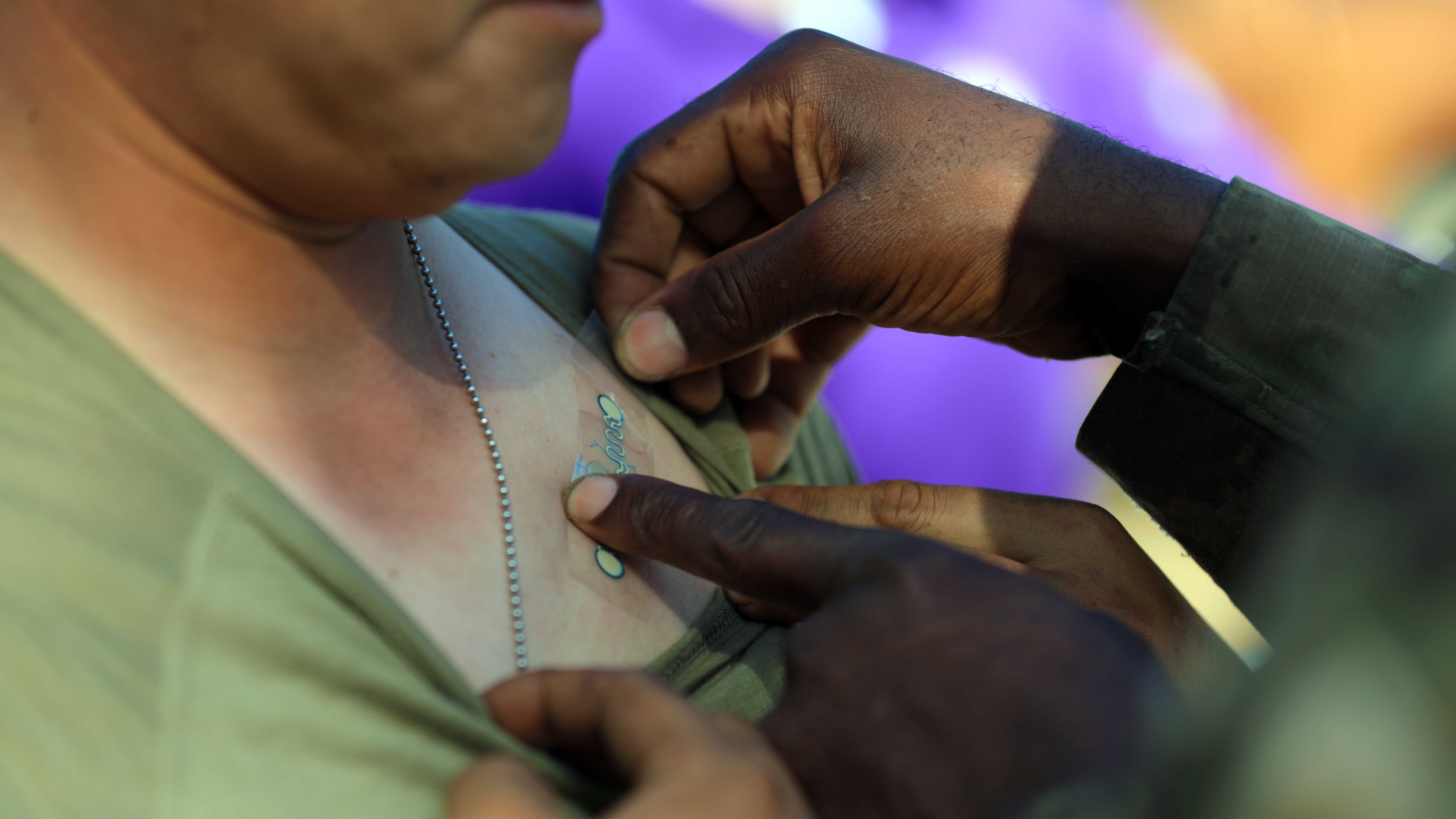Hydration, Wearables Help Army Prevent Heat Injuries
Hydration, Wearables Help Army Prevent Heat Injuries

A combination of proper fuel and wearables can help soldiers achieve optimal performance, particularly in hot-weather conditions, experts said during a forum hosted by the Army Heat Center at Fort Moore, Georgia.
“Dehydration … is a contributing factor [to heat injury],” said Christina Lapeyrouse-Franklin, a performance dietitian assigned to the 194th Armored Brigade’s Holistic Health and Fitness Program. “We know that our soldiers conduct long and sometimes multiple training exercises in a single day, and as a result, they’re often chronically dehydrated or at least a little bit [less hydrated].”
Heat injuries can include heat stroke, heat exhaustion and sunburn, according to a Department of Veterans Affairs webpage.
When dehydration and physical exertion combine, the heart “has to work harder,” soldiers’ core temperatures go up and they’re at a greater risk for heat injuries, Lapeyrouse-Franklin said during a presentation at the forum.
In 2022, the Army saw 228 cases of heat stroke and 993 cases of heat exhaustion, according to data from a Defense Health Agency report from April 2023. Men under the age of 20, recruit trainees and service members in combat-specific jobs were at the highest risk of heat injury, according to the report.
In addition to hydration, proper fuel from food is key, said Brooks Ford, a performance dietician with the 75th Ranger Regiment. “Nutrition is certainly important for not only reduction of heat illness, but also for optimal performance,” Ford said. “We know when soldiers are properly fueled and they've got adequate stores of carbohydrates, they can essentially push harder for longer.”
To better prevent heat injury and track and optimize soldier performance, the Army has been looking to refine its use of wearable devices. One of those efforts is the Heat Illness Prevention System, a sensor worn around the chest that provides leaders real-time visibility into a soldier’s heat illness risk while in the field, according to the Army.
The Army Research Institute of Environmental Medicine has analyzed about 14,500 heat illness data points from cases across military installations to develop an algorithm that can detect heat injuries before they strike.
Though heat injury numbers “are hard to get out in the field and in real-time,” the Army is “at an endpoint where [it] can begin to provide you a tool to help manage risk of heat illness in an active way,” said Mark Buller, research physiologist at the Army Research Institute of Environmental Medicine.
Wearables are not a silver bullet, Buller emphasized. “These devices are … not going to fix everything. You actually have to know how to use them, when to use them and [how to] use them well when you’re going to use [wearable devices],” he said. “You actually have to know: Is the device working properly? Are the data that are coming in good? Do I know how to interpret the data?”
The Army will continue to invest in heat injury prevention, Lt. Col. Dave DeGroot, who leads the Army Heat Center, told Stars and Stripes.
“This has great potential,” he said. “If we can get unit-level leaders this access to real-time data, they suddenly don’t have to worry about all these other factors, they have the ability for heat illness mitigation right there. That’s something potentially great.”

